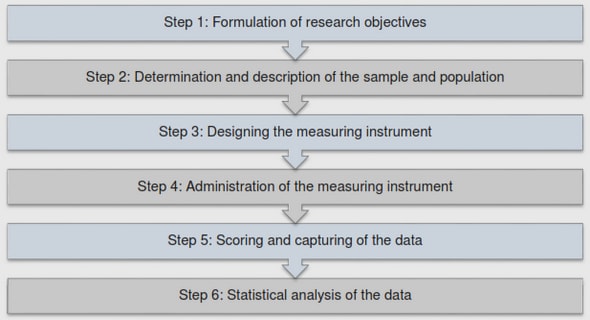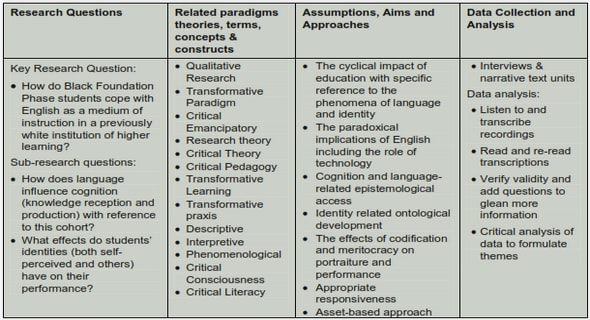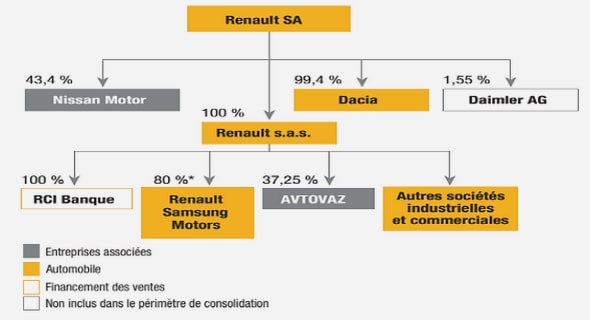Get Complete Project Material File(s) Now! »
CHAPTER 4 EGYPT’S CONTACT WITH SYRO-PALESTINE, CONTEMPORARY RELIGIOUS CONCEPTS AND SYMBOLISM
INTRODUCTION
Chapter 1, I briefly discussed the continuous contact between Egypt and Syro-Palestine from the Chalcolithic Period to Iron Age II. Some of these contacts resulted from hostile activities, others from trade relations, passing through a region or random casual encounters. Hostile activities include invasions with temporary and limited goals such as military raids, but also the creation of more permanent military presence as part of empire building, the latter being more conducive to cultural exchange than a short-lived incursion.
In this study it is not intended to give a complete overview of Egyptian history, including the historical development of Egyptian religious concepts and symbolism. For purposes of this study I will confine myself to those periods of Egyptian and Syro-Palestine history when the regions were the most closely involved politically, commercially or otherwise. Cultural exchanges between Egypt and Syro-Palestine apparently occurred over millennia and Egyptian religious symbols appearing on seals from Syro-Palestine during Iron II could be the result of cultural exchanges that occurred already during the Bronze Age. As will be discussed in more detail in Chapter 6, anepigraphic seals with Egyptian motifs (including Egyptian religious motifs), dating to the Bronze Age, have been discovered at archaeological sites all over Syro-Palestine.
Although Egyptian motifs first made their appearance in Canaan, Phoenicia, Israel and Judah during the Bronze Age, epigraphic seals with such motifs only appeared in this region at a very late stage during Iron II. It therefore does not necessarily follow that the motifs on these seals resulted from cultural exchanges during Iron II only. These motifs could have been established centuries before and became a cultural tradition in the region. The name Thutmosis III (the Eighteenth Dynasty pharaoh) for instance appears on seals as late as the Twenty-Sixth Dynasty. The names of Old Kingdom pharaohs such as Khufu and Wenis were first inscribed on seals during the New Kingdom, not on contemporary ones (Andrews 1994:55).
One also finds that during the Twenty-Sixth Dynasty the Saite rulers of Egypt revolutionised the prevalent religion in Egypt by reverting to archaic gods, cults, rituals, priesthood, festivals and ceremonies (Law 1988:91-92) (see also paragraph 4.4.2 hereinafter). One should therefore be careful not to confuse one period with an older one by dating artifacts to an earlier period simply because they represent symbolism from the earlier period and were not found in context.
In the premises it would be unscientific to confine oneself to the period in Egyptian history coinciding with Iron IIB and C, i.e. from Dynasty 21 to 26 (during the Third Intermediate Period and the early part of the Late Dynastic Period).
Before continuing with the specific periods I will endeavour to explain certain Egyptian religious concepts as well as Egyptian symbolism and the role of amulets and scarabs.
RELIGION AND CULT IN ANCIENT EGYPT DURING RELEVANT PERIODS
Cults, temples and rituals
Cults
The word cult comes from the Latin word cultus, a derivation of the verb colere meaning ‘to worship or give reverence to a deity’. Cults were the official structure used to worship the Egyptian gods. In regard to ancient Egypt, this structure included the priests who carried out rituals associated with the gods, who were frequently manifest in the form of statues, within the cult temples (Gomes 1995:7). The center of the Egyptian cult was the temple, a sacred area enclosed by a wall that excluded the profane.
Temples
By definition, a temple, in Egyptian context, was a closed place, the house of a god, the receptacle of his effigy and his ba, isolated and protected from the outside, profane world by its enclosure wall. It included a section devoted to worldly needs. Inside the sanctuary of the temple was the effigy or cult statue, which served as the dwelling for the god worshipped in the cult center, though there could be and were more than one in many temples (Dunand, Zivie-Coche & Lorton 2005:121). Some of the temples are dedicated to more than one god. A prime example is the double temple, devoted to Horus and Sobek at Kom Ombo in Upper Egypt (see Figure 100 on p.304).
At state level temples played an important role and in Ancient Egypt there were two approaches towards the temple concept. In earlier dynasties one finds the sun temples, especially during the 5th Dynasty (but also the Aten temples during the Amarna period of the 18th Dynasty) and the cultus and mortuary temples. In contrast to houses and palaces, regarded as temporary dwellings and thus for the most part constructed of clay bricks, temples, like tombs, were approached on the basis of lasting forever and were thus elaborately built of stone and luxuriously decorated (Kleiner 2008:52).
Temples could be divided into cultus and mortuary temples. Although their architecture and rituals were similar, the cultus temples and mortuary temples were two distinct concepts. The cultus temple, dedicated to the cult of a particular god or goddess, was the house of the god, where his or her statue could be housed and protected (Oakes & Gahlin 2007:354). It was a place of great sanctity where the king or priest by the use of specific rituals and offerings could approach the god. From the offerings the god could derive sustenance and benefit. It was believed that the god or goddess on his or her part would assist in maintaining ma’at and provide bountifully for Egypt (Shafer 1998a:1). This relationship and regular performance of rituals were regarded as essential lest disaster befall the country (Cf. James 1983:139).
Mortuary temples had a similar cultus function, but they had an additional function. During the Old and Middle Kingdoms they were attached to the pyramid as part of the king’s burial complex where the funerary rites were performed and perpetual offerings were placed to ensure the continuing sustenance of the deceased ruler. With the demise of pyramids and the introduction of rock-hewn tombs, a lack of space prohibited the erection of adjacent mortuary temples. These temples were now built as separate entities away from the Valley of the Kings, but for the most part still on the west bank of the Nile at Thebes. They still functioned as places where the deceased, but now deified king, was worshipped and provided for by food offerings. In its cultus function the temple was dedicated to the main local deity, thus providing for rituals incorporating both the god and the king (Cf. Murray 1931:3-4).
Cult rituals
Cult rituals were actually dialogues between the gods, and therefore the king (or a priestly substitute for the king) acted in the divine performance as a god
Until the Middle Kingdom, the spheres of administration and cult were not separated, but in the 18th Dynasty, a special priesthood for cultic purposes was established (Erman 1894:293; Fox 2000:47).
Rituals centered on offerings, but there were certainly numerous other rituals, including many daily functions such as washing and clothing the gods (or at least the statue of the gods). Other rituals took the form of celebrations when, for example, one god might be taken to visit the cult center of another, and it was during these festivals that common Egyptians probably came closest to their gods, for at other times they were prohibited from the sanctuaries that housed the cult statues (Johnston 2007:156).
The ancient Egyptians believed that the living, the dead and the gods all had the same basic needs: shelter, food and drink, washing, rest and recreation. The living was accommodated in houses, the dead were provided with tombs and the gods resided in temples. Foods were supplied for the dead by means of the funerary cult and the god’s needs were served through divine rituals in the cultus and mortuary temples (Silverman 2003:148). It provided a ritualised and dramatised version of the mundane process of washing, clothing and feeding of the god’s cult statue in the sanctuary.
A second group of rituals were the festival rituals which, although they differed from temple to temple, depending on the particular god’s theology, were held at regular, often annual occasions and celebrated special events in the god’s life, such as the resurrection of Osiris. These festivities consisted of celebrations both inside and outside the temple, including a public procession of the god’s statue and, as already stated, this was the only occasion when the public had the opportunity to see the god and participate in his worship (Silverman 2003:149-150; David 1999:111-112).
At first the cult, and for that matter, the benefits of religion and the gods which it served, was for the most part limited to the king, though many functions and rituals were performed by his substitutes (priests). Common Egyptians could mostly only hope that the King took his religious duties seriously or otherwise they might expect to suffer famine or other disasters or for that matter, any prospect of an afterlife. As time passed, religion became much more popularized, so that in later Egyptian history, common Egyptians demanded their own means of worshipping and being accepted by their gods. More and more ordinary Egyptians built within their homes shrines for their personal worship, or at other times, small public shrines where they could worship and pray together. However, throughout Egyptian history, ordinary Egyptians were limited as to the scope that they could participate in the state cult centers (James 1983:132; Silverman 2003:162).
Magic and Egyptian religion
It seems that the ordinary Egyptian’s religion consisted largely of magical practises and the invocation of those deities who might protect him or her from the dangers of daily life (James 1983:133-134).
Magic has been defined as ‘the apparent manipulation of natural forces to change the form of things or influence events’ (David 1999:119).28In Egypt, in contrast to the Israelites, magic was fully legitimized through religion. Magic was a thread that linked everything because all things were regarded as potentially animate if the correct magical procedures were followed (Cf, Thompson 2003:51; Harris 1998:156).
‘In fact, the ancient Egyptian religion was inseparable from magic and thus it became an integral part of daily life in many ways. … Priests were not mere administrators of divine will, but also masters of the magic arts. Their job was to keep the perfect primeval order of things, but they didn’t hesitate to use their magic for earthly purposes as well.’ (Frater 2008:340).
Magic has also been variously defined as ‘a “pretended art”, an art that can somehow influence the course of events and produce amazing physical phenomenon. The art of magic is supposedly to work by using its power to compel supernatural beings to intervene in everyday events or to call up occult forces of nature’ (Christie 2007:6).
Throughout the ages magic and religion have been associated with one another, either forming an integral part of the beliefs of a country like Egypt or being used in conjunction with them, ‘…whereas “society” principally covers relationships between man and man and “religion” the relationship between deity and mankind, the powers of magic found application in both spheres’ (Marshall et al 1996:714). Thus, higher authorities or deities had to exist to explain the otherwise inexplicable. Rituals could help to solve everyday problems and maintain stability and well being. As a result magic and superstition played a crucial part in daily life and were by no means considered unorthodox or an alternative to religion but an integral part of it. As a matter of fact, magic can be regarded as a subdivision of religion.
Egyptian religious symbolism and its meaning
Symbols, since prehistoric times, have played a major role in the culture and religion of Egypt. Symbols were used on a regular basis to convey concepts and ideas which would be difficult to express clearly through more concrete modes of expression. These ideas, thoughts, beliefs or perceptions often transcended the realms of reality (Cf. Bonnefoy & Doniger 1992:12-15). Egypt’s symbolic orientation can be confirmed by the fact that these symbols were not just used for decorative purposes but they also were inherent to religious and magical rituals. Any effort at understanding Egyptian culture would be half hearted without learning more about these symbols (Cf. Kirk 1973:207-208).
Religious symbolism in Egypt can best be illustrated by the system of hieroglyphs, which, even after the development of other writing systems (hieratic, demotic and, Coptic) in Egypt, remained the vehicle for religious (sacred) writings (Geddes & Grosset 1997:378). ‘Hieroglyphs contain within them the very essence of ancient Egypt’ (McDermott 2002:6).
Dedication
Acknowledgements
Abbreviations
List of tables
List of illustrations
CHAPTER 1: INTRODUCTION
1.1 Introduction
1.2 Defining various concepts
1.3 Statement of the problem
1.4 Addressing the problem
1.5 Pictorial evidence
1.6 Seals: History in miniature
1.7 Conclusion
CHAPTER 2: REVIEW OF RECENT LITERATURE
2.1 Introduction
2.2 Ziony Zevit
2.3 William G. Dever
2.4 Othmar Keel & Christoph Uehlinger
2.5 Amihai Mazar
2.6 Izak Cornelius
2.7 Conclusion
CHAPTER 3: SYMBOLISM AND RELIGION
3.1 Introduction
3.2 Application of symbolism
3.3 Symbolism and religion
3.4 Conclusion
CHAPTER 4: EGYPT’S CONTACT WITH SYRO-PALESTINE, CONTEMPORARY RELIGIOUS CONCEPTS AND SYMBOLISM
4.1 Introduction
4.2 Religion and cult in ancient Egypt during relevant periods
4.3 Ancient Egypt’s contact with Syro-Palestine and relevant prevailing religious concepts
4.4 Egyptian religion during relevant periods
4.5 Conclusion
CHAPTER 5: EGYPTIAN SYMBOLISM ON PHOENICIAN SEALS DURING IRON IIB AND C
5.1 Introduction
5.2 Egyptian religious symbols on Phoenician seals
5.3 Analysis of Phoenician seals with Egyptian motifs
5.4 Conclusion
CHAPTER 6: AN ANALYSIS OF SEALS FROM ISRAEL AND JUDAH DATING TO IRON 11B AND C
6.1 Introduction
6.2 Seals with Hebrew inscriptions and Egyptianised iconography
6.3 Hebrew anepigraphic seals with Egyptian iconography
6.4 Conclusion
CHAPTER 7: SUMMARY, CONCLUSION AND RECOMMEN- DATIONS FOR FURTHER STUDY
7.1 Summary
7.2 Conclusions
7.3 Recommendations for further study
ANNEXURES
BIBLIOGRAPHY
GET THE COMPLETE PROJECT
EGYPTIAN RELIGIOUS SYMBOLS IN JUDAH AND ISRAEL FROM 900 B.C.E. TO 587 B.C.E.: A STUDY OF SEAL ICONOGRAPHY


